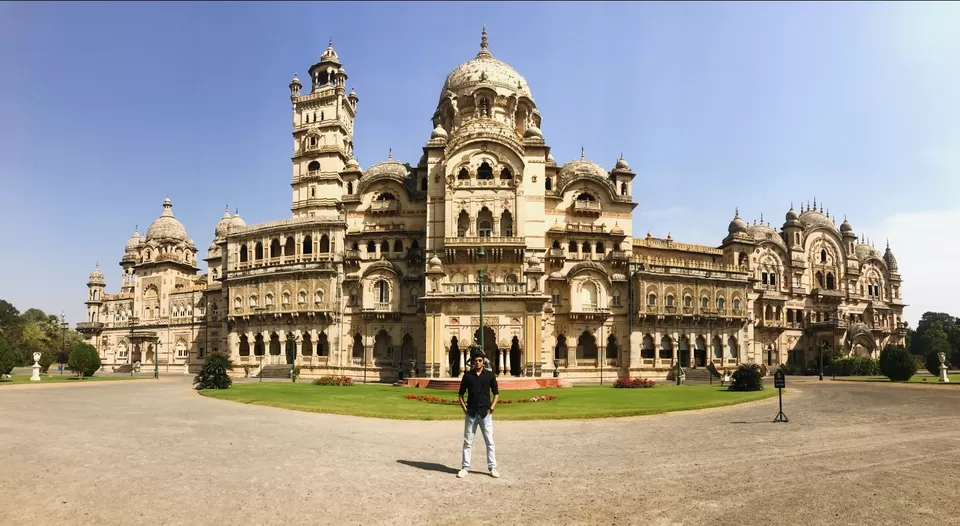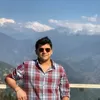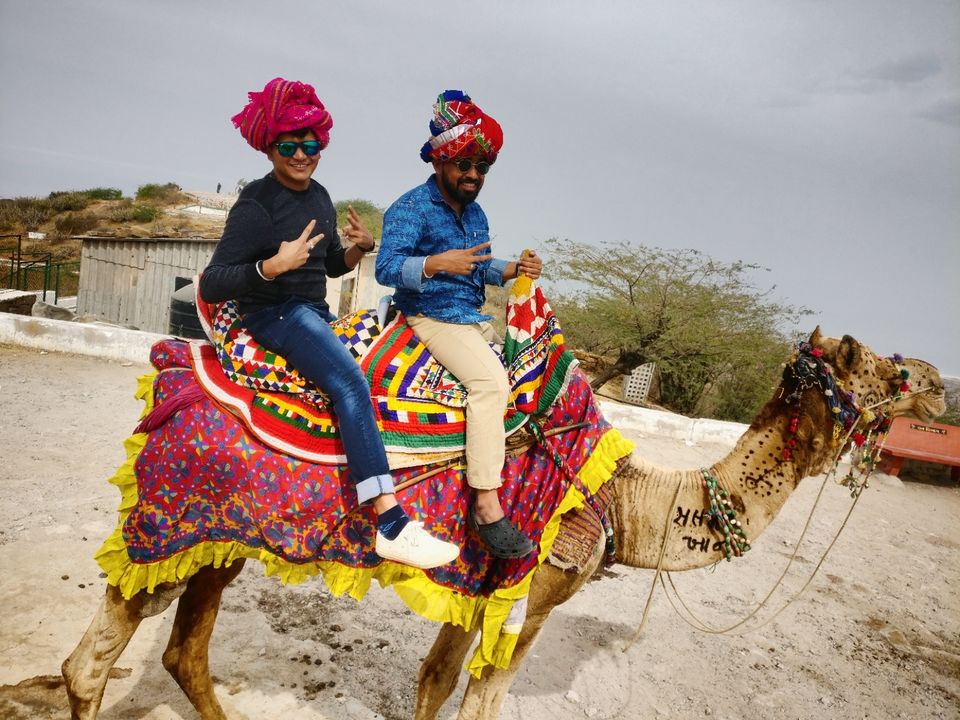
"Once in a while, make sure to visit a place that stops time
Look above with wonder, let your face filled up with sunshine
Make a few friends along the way, sing some new rhymes
Travel not to live but live to travel and you will be all fine"
Such is the magic of traveling which sucks out the ennui set in our everyday lives, makes us think about the world beyond Excels and PPTs, pushes us to take risks and explore things out of our comfort zone but most importantly reminds us to feel the world that differentiates us as humans.
This trip that we kept on talking about for years after our graduation but somehow due to individual commitments was never executed, Until one fine tripy Saturday night out of our mortal senses, we promised ourselves to make it happen.
A couple of weeks later we hit the road from Mumbai, Maharashtra as the clock struck 11 o'clock on a Sunday night. We were supposed to drive a total of approximately 850 km to reach Bhuj before noon next day. The NH 48 till Ahmadabad is an absolute pleasure to drive on with banking precision and negligible congestion at night. It's a sheer delight to have a good sound system in your ride accompanied by some crazy friends driving on such smooth wide roads singing "Dil Chahta hai" at the top of your voice when the entire world has dozed off.
Couple of pit stops at Ahmadabad and Vikramgad, we arrived at our pre-booked Villa (more over a row house) through Airbnb in Bhuj. The owner was a gentleman who made our three day stay in the town a memorable one. The Villa was spacious enough to accommodate 8 people with all the basic amenities including the cooking essentials. Bhuj is at the center of the scheme of things from where everything else is accessible in all the possible directions ( Rann, Lakhpat, Mandvi, Dholavira) .
After a 12 hr night ride, a quick nap was essential to be ready to explore Bhuj in the evening. The city fell prey to a devastating earthquake in the early 2000's only to be resurrected brick by brick again going through a acute physical and emotional turmoil. The people here would go out of their way to help you out with a wide smile on their face that once carried the horrors of such grave tragedy. We explored the Chat gully of the Bhuj market to taste some lip-smacking street food and ended our day with a visit to the Swamy Narayan temple build with aesthetic white marble. We were lucky enough to witness the evening aarti that imparted a feeling of contentment to our inquisitive souls.
After a long night sleep, we set out early morning for the magnetic hill, Kalo Dungar. It is believed that the earth's magnetic field here is so strong that the vehicle gets pulled toward the hill with the engine shut off (I found it to be a bit exaggerated). Despite the weird conceptions, the view from the hill is majestic which gives a perpetual feeling of satisfaction. We took a fun ride for a short distance with Salman and Shahrukh, our camels on the Dungar and clicked some funny pictures along the way.
The next destination in our itinerary was India bridge, a quick detour from the way towards White Rann which was our ultimate destination for the day. The bridge is the last place where the civilians can visit after which the next 60 km is controlled by the BSF till the border. Only civilians with special permission are allowed to visit beyond this point. The bridge is completely engulfed by the white stretch of land on both the sides. A quick chat with the personnel there unveiled some perspective into their everyday life. Far away from home for years and years, our Jawans are stationed on the border having limited connection with the outside world. The sacrifices they make each day is something that we cannot even think of doing in our entire lifespan. These are the true heroes that we must follow, true idols that we must worship and try to imbibe a mere shred of their patriotism then maybe someday there wouldn't be any need for all the complaints that we have with our country. On the way back towards the Rann festival, we had some authentic village lunch at a modest dhaba named, Gurukripa.
We reached Dhordo, where the Rann festival is held every year. One can stay here in the Tent city at the festival which is quite heavy on your wallet and hence we gave it a miss. Its about a km walk till the watchtower which is erected in the middle of the white Rann. The place is magical in itself and the sunsets here are the epitome of solace one can ever feel. For miles and miles till the horizon, all you can see is the white land decorated with a complimentary blue sky and intermittent shades of clouds.
"Stare into nothingness and you will find the purpose of life" seemed so apt after spending hours in the White Rann and watching the clouds drift along playing hide and seek with the setting sun. The air bought a bit of moisture along with it as the sun went down and we could hear the surrounding fill up with the melodious classical music playing at a distance. The view from the watch tower was unparalleled after the last ray of light bid adieu to us paving the way for a musical night. We took a camel cart ride back to the tent city where raw classical music filled the surroundings with melodies of authentic Indian tunes. We wore the traditional head band suggested by the musicians and danced to their tune like rats to the Bag piper :P.
Soon after such enriching and fulfilling musical session, it was time to lighten up our wallet by shopping in the world famous Kutch market of Handicrafts. Everything here is handmade with lots of unique designs and concepts. From handbags to shoes, blankets to shawls, bracelets to necklace and a lot more to shop is available at a very competitive prices. The same goods will cost you bang when purchased from metro cities due to the middleman getting involved in the transport and distribution. The festival gives the opportunity to the local craftsman to sell their goods directly to the customer hence eliminating the dependency on the commission hungry representatives. The sheer plethora of the handicrafts to choose from would need at least a couple hours to make peace with your shopping demons.
After bags full of souvenir for loved ones and lot of unforgettable memories, we bid farewell to the majestic Rann of Kutch festival. A brief halt for dinner on the way and we were back to our humble abode after such an enriching day.
Nights in Kutch are chilly as hot as the day might be and we had a very specific ritual for all the nights that we spent here. We enjoyed cool Seesha (took it with us from home as we knew Gujarat is a dry state :P) under the stars in our balcony playing cards till midnight. The blues playing in the background and the Sheesha scent drifting along with the chilly wind made a perfect setting to end the day on extremely relaxed note.
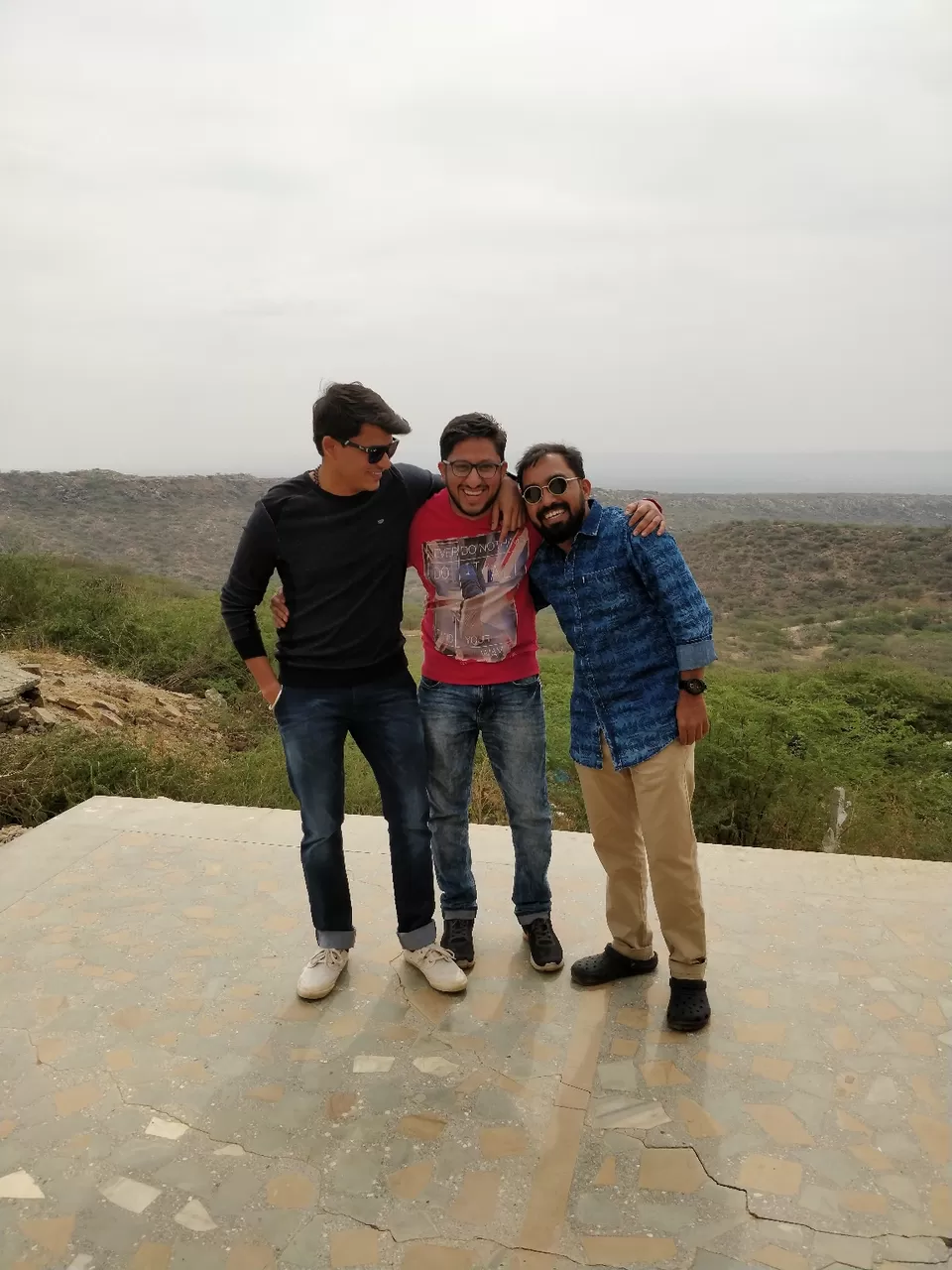
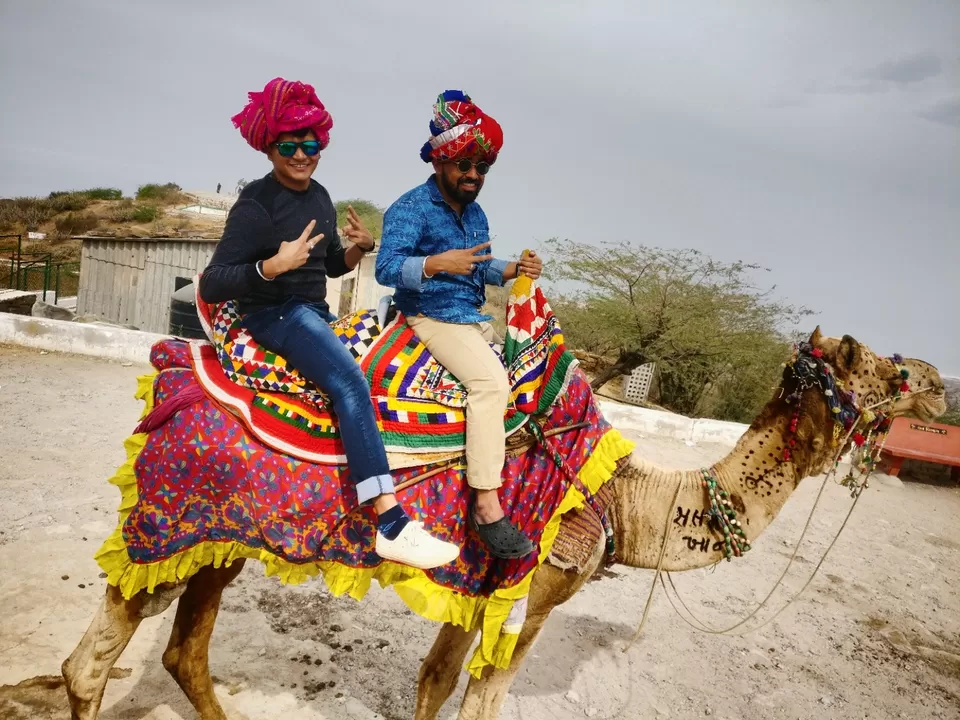
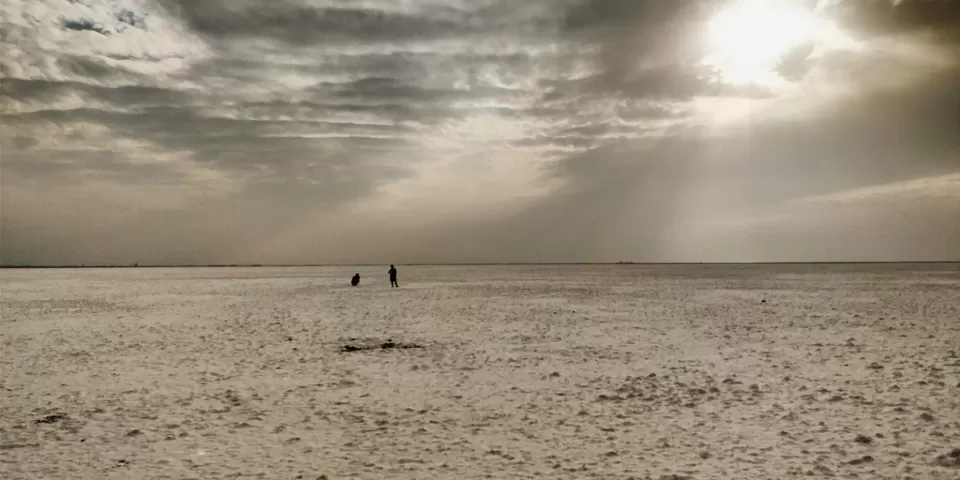
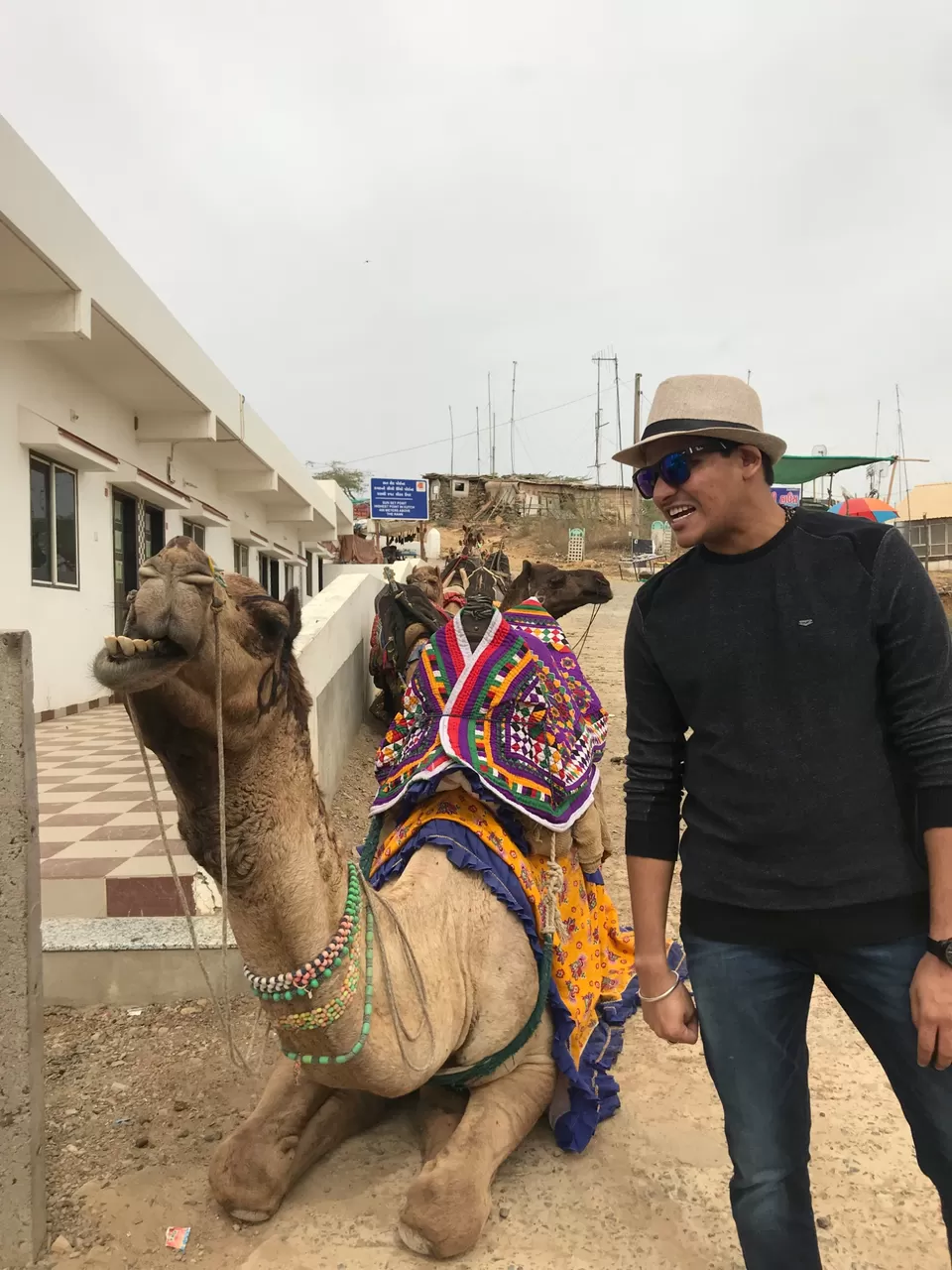
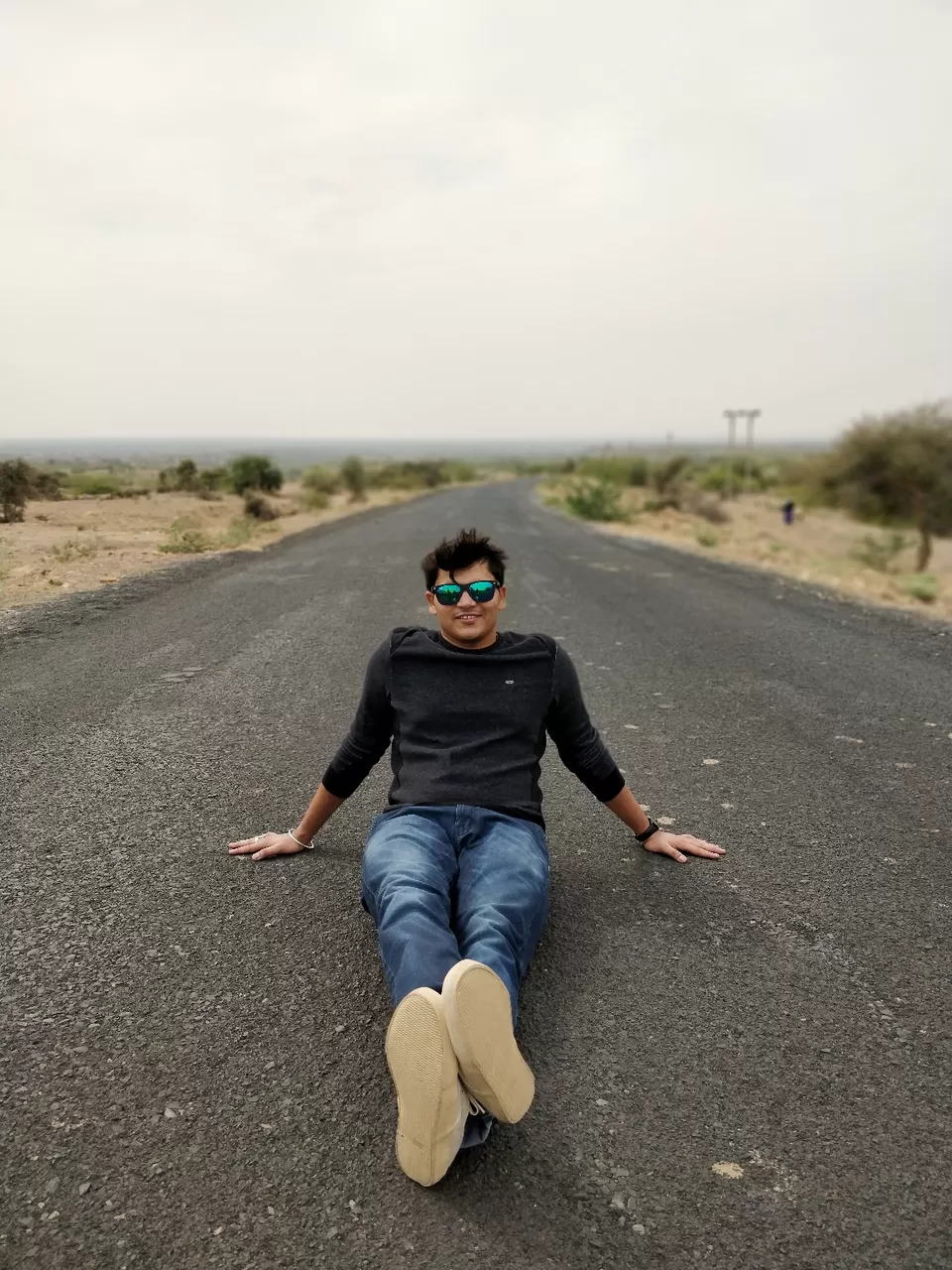
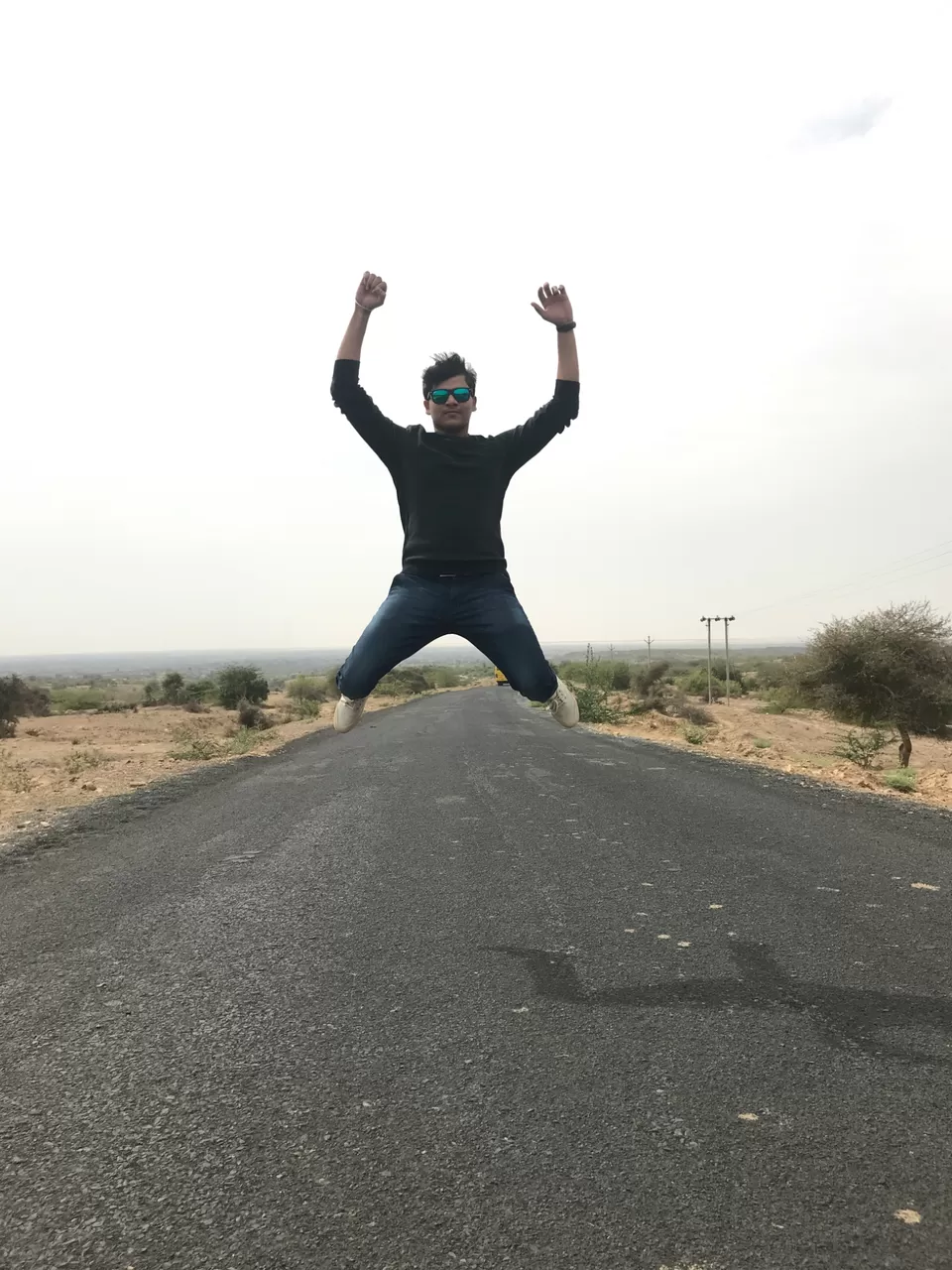
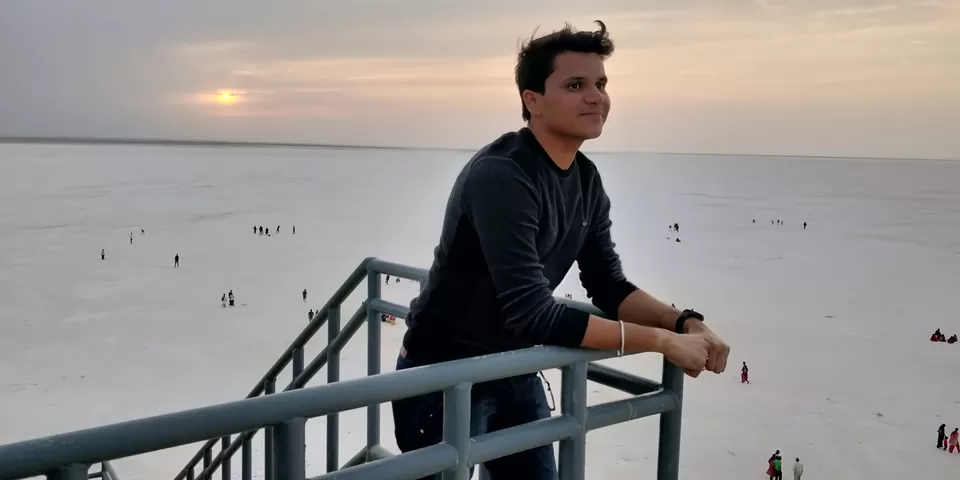
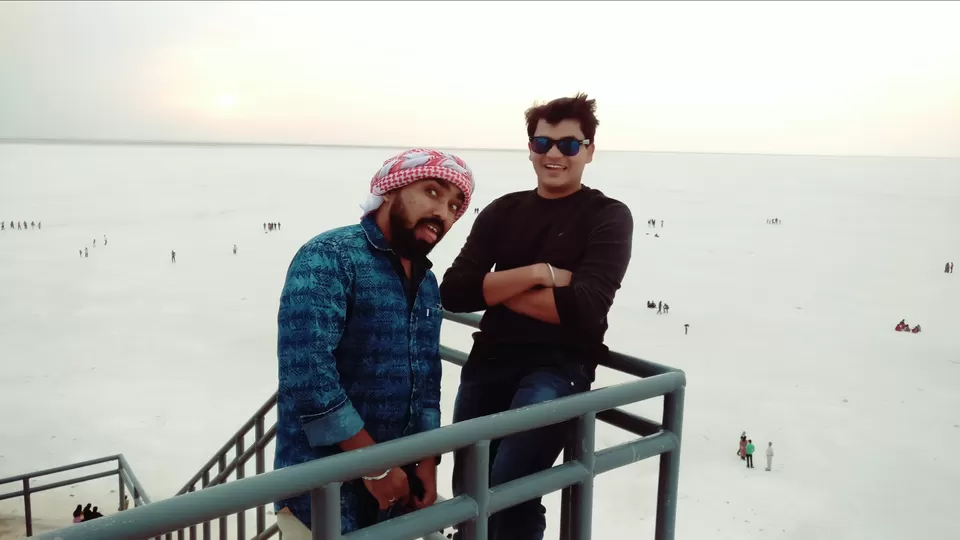
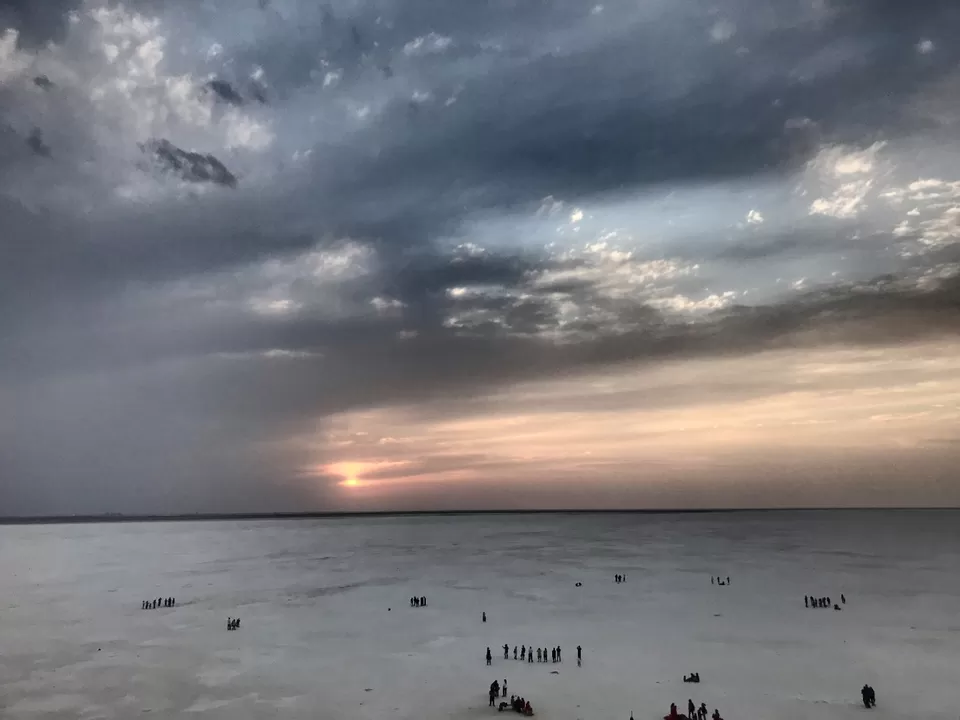
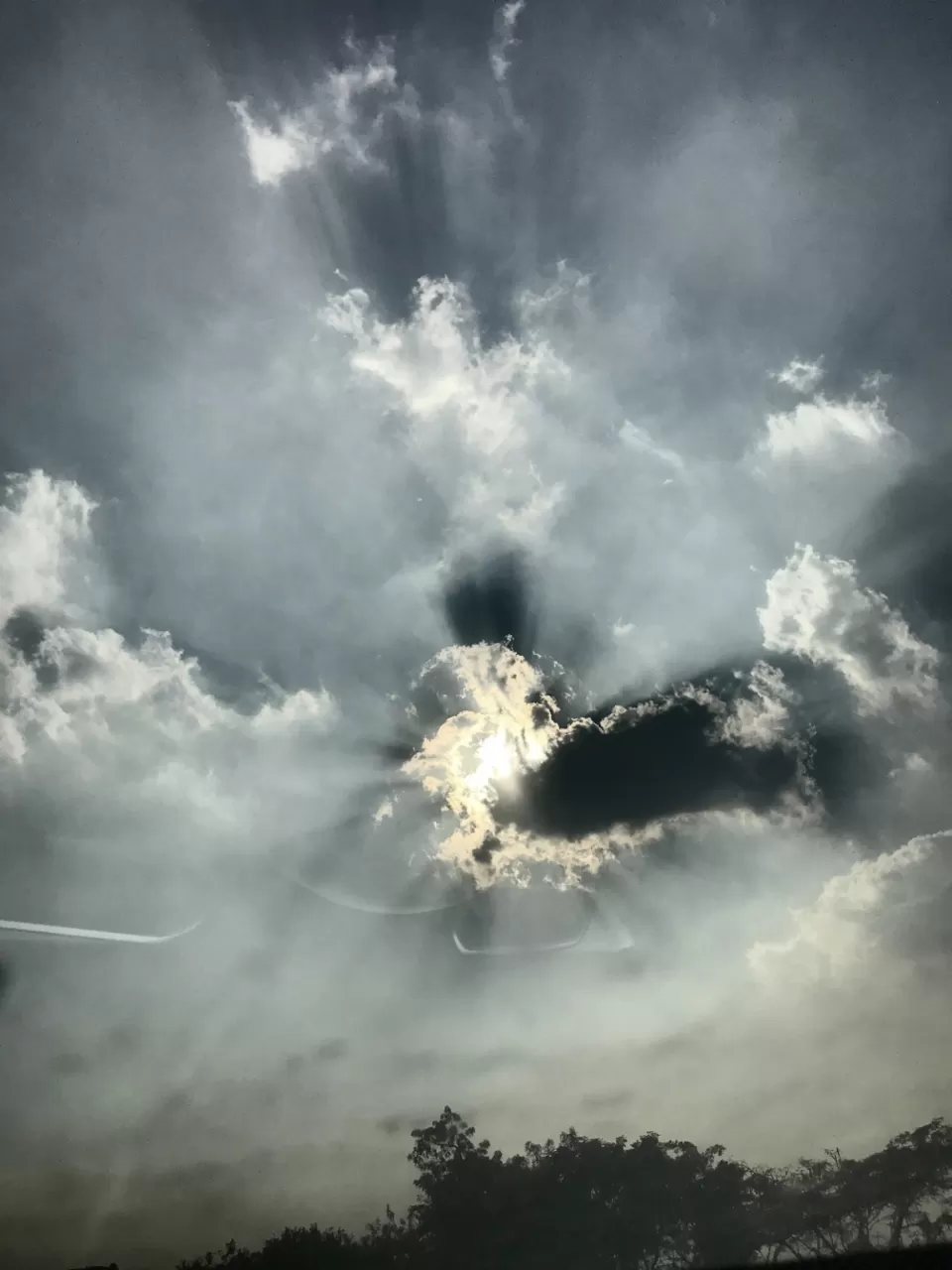
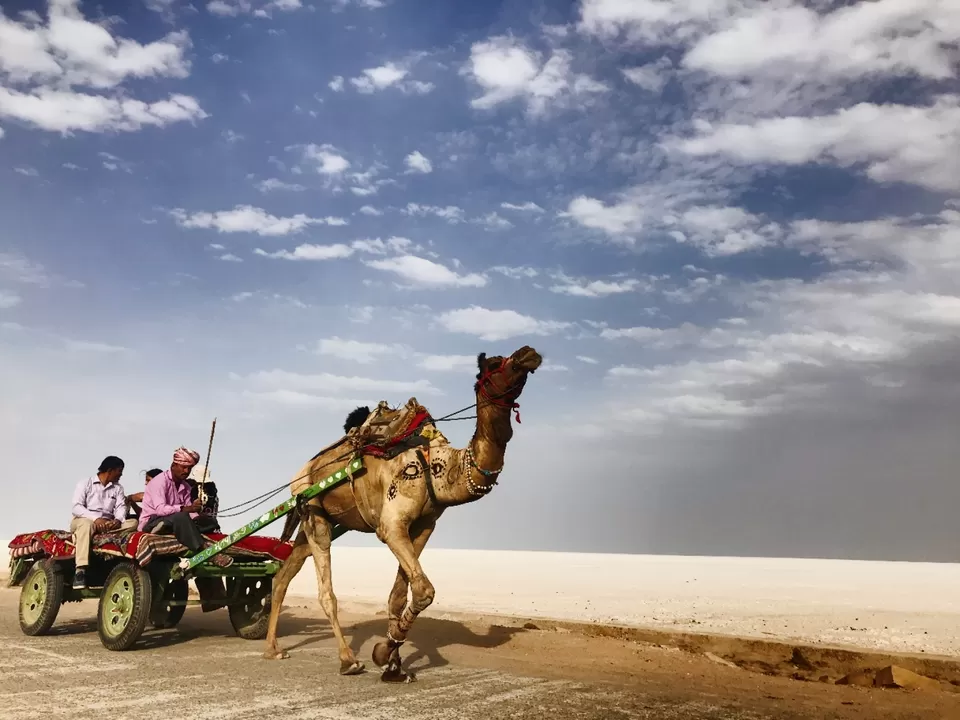
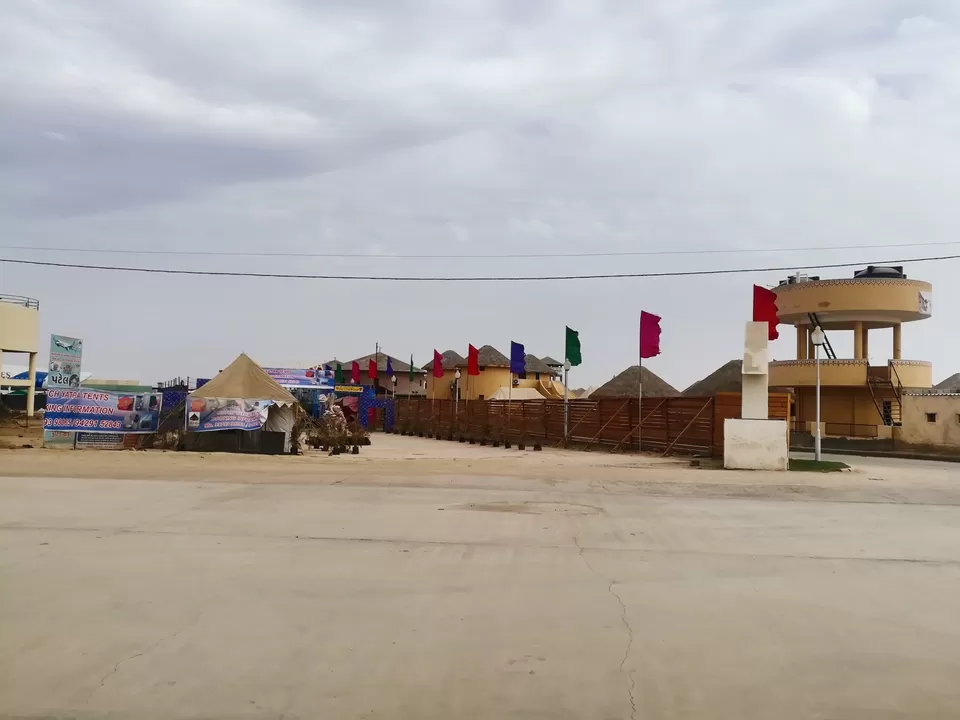
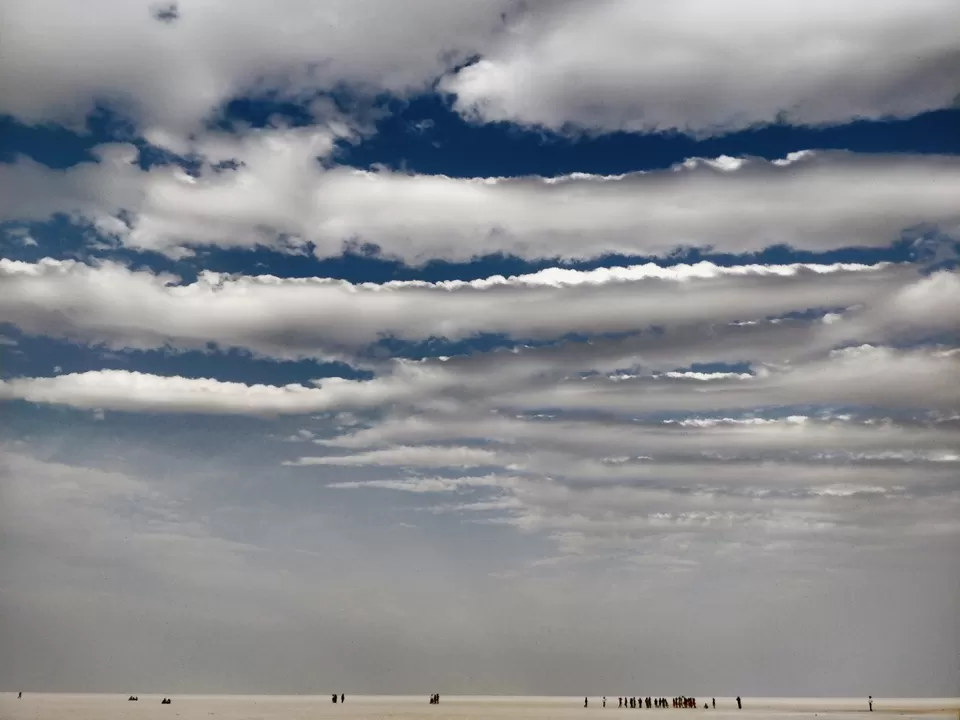
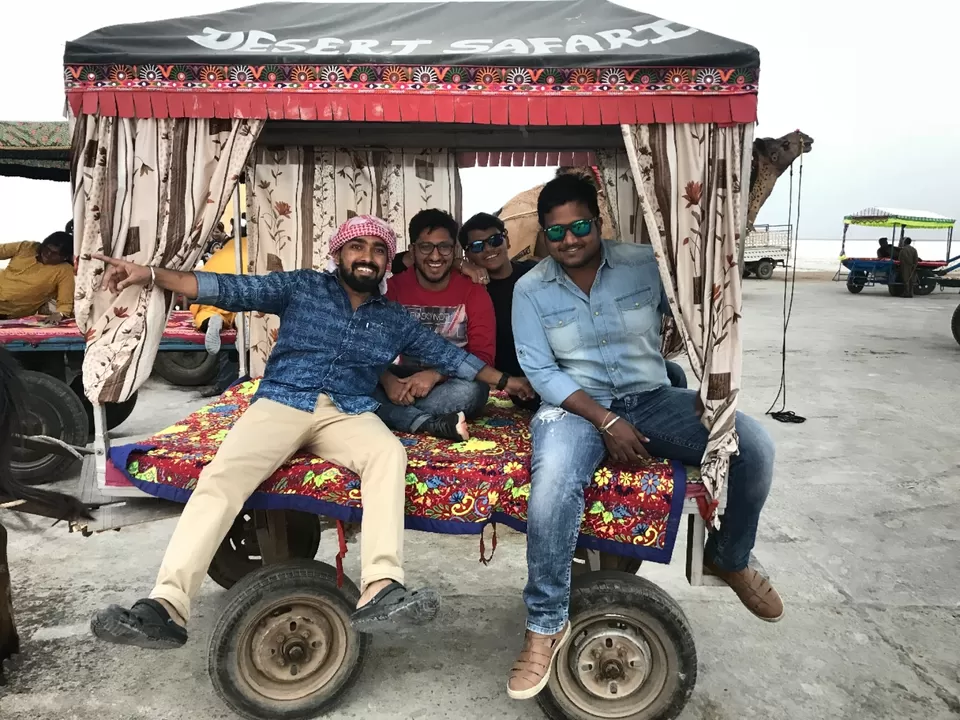
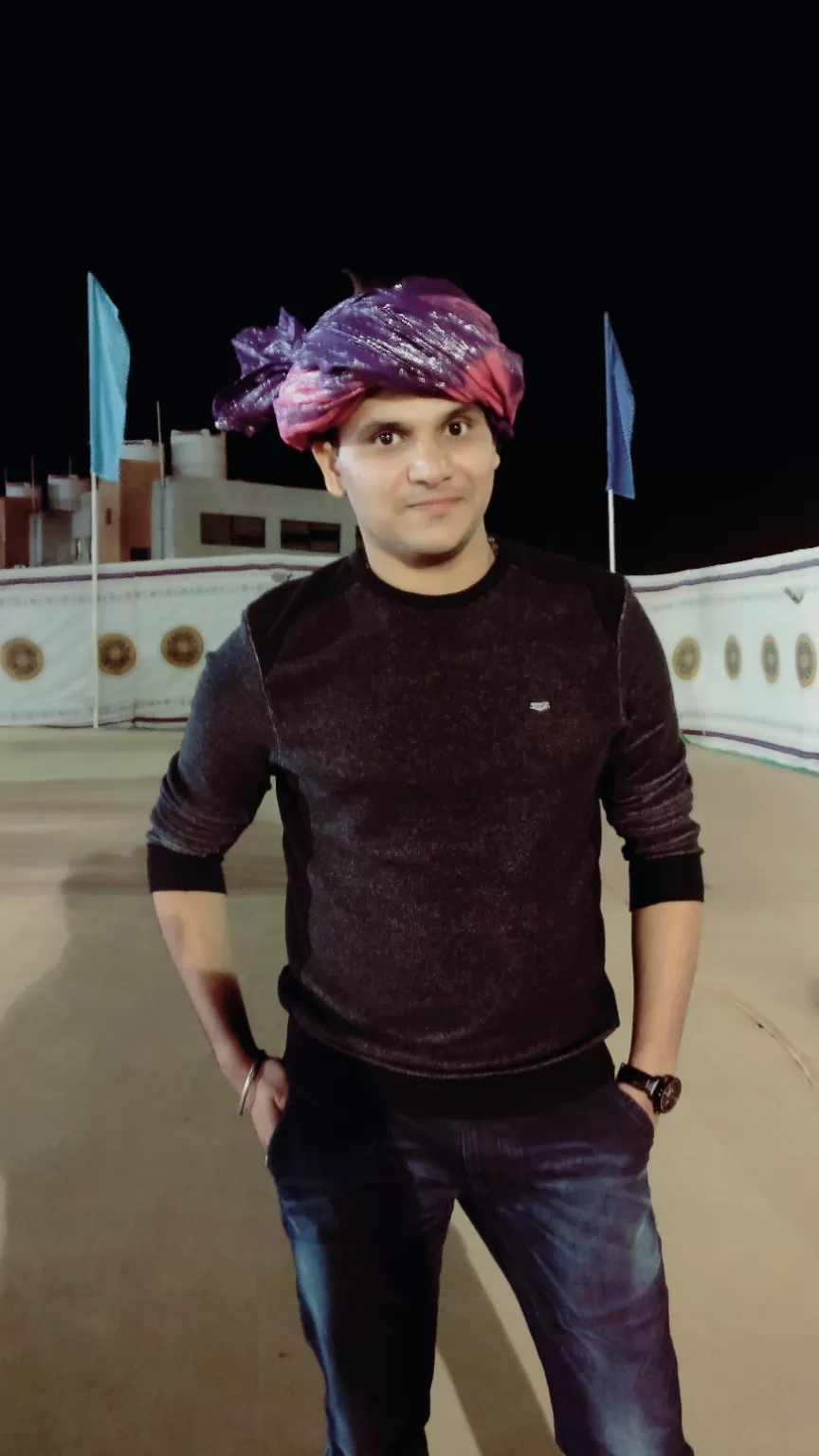
As i am always looking for something off beat in every itinerary i design, this time it was the excursion to the ghost town, Lakhpat. The town is located on the Kori creek enclosed by a 7 km long 18th century fort walls. It lies to the west of Bhuj at about 135 km and carries a very sparse population (807 as per 2011 Census). It is the last port town on the Indo-Pak border once an epicenter of the Sindh trade. The town was tested by natural calamities and multiple invasions to lose its importance over the course of time. The entry to the town is through the main fort gate after which you would witness ruined houses, fallen walls, deserted corridors and arid vegetation. A couple of shepherds would guide your way to the north walls of the fort towards the creek where lies the Tomb of Pir Ghaus Muhammad, a Sufi saint and Syyed of Lakhpat, half-Muslim and half-Hindu in his customs, who was believed to have supernatural power. Dying in 1855, his brother Bava Mia or Sa Saheb, from contributions made by Gosh Muhammad's followers, began to build a tomb locally known as Kubo. This tomb, of black stone, on a platform fifty-four feet square and seven high, rising in a conical dome 63 feet 3 inches high, is octagonal in shape, with four side doors arched and richly carved, and the walls decorated with patterns of flowers and leaves. Inside, the floor is paved with white and black marble, and the grave is covered with a white marble canopy. On the walls are passages from the Quran. It is still unfinished. The water tank opposite the tomb is believed to have healing characteristics for skin diseases. The tomb is an epitome of cross religion brotherhood where humanity is the biggest religion and love is the true god.
The town also has a Gurudwara, which was closed when we visited. The walls of the fort are high enough which lets you enjoy a panoramic view of the town nested along the creek. The water in the creek has receded leaving behind a dry sea bed full of sea shells. The sun here was harsh but the cool wind made up for it which blew eastwards singing the deeds of the past this deserted place once witnessed. The sky here is as clear as any day which make this an ideal spot for some Instagram worthy photos.
The next destination in the itinerary was Koteshwar Mahadev mandir, located on the kori Creek itself on the lines of Lakhpat. One has to take an alternate longer route to reach Koteshwar as the usual straight road is through the iron ore mines which are closed for civilian access. We were sent back half way, when a guard noticed us as driving on a road rigged with landmines that sent an instant chill down our spines. We thanked our lady luck graciously and of course the vigilant guard to stop us getting blown up in the air adding to the count of existing ghosts in Lakhpat :P.
The koteshwar Mahadev mandir is right at the edge of the sea and is widely known place of worship in the Kutch area. The temple was once almost entirely cut off from the mainland by tidal waves only to be reconnected by road later on. After a quick snacks break, we left koteshwar before sunset to reach Bhuj on time for dinner.
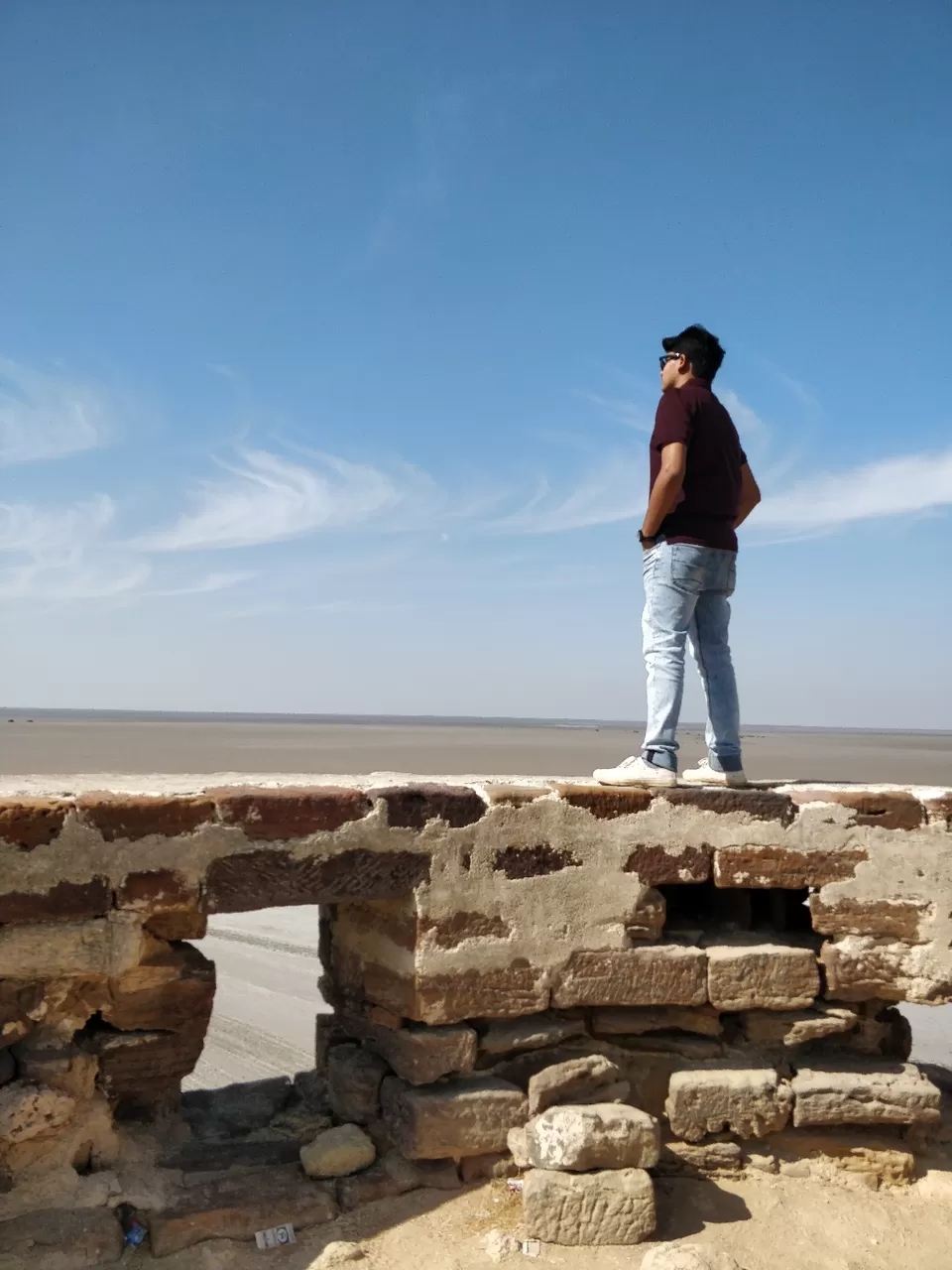
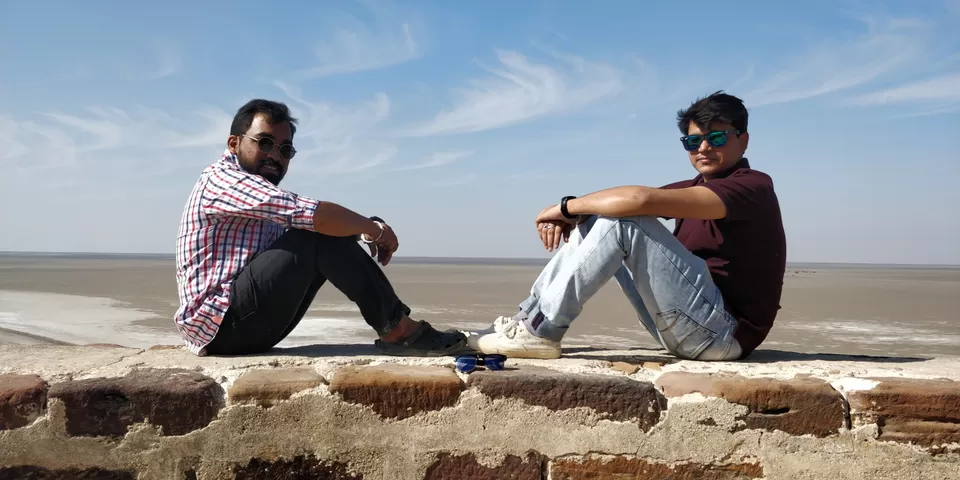
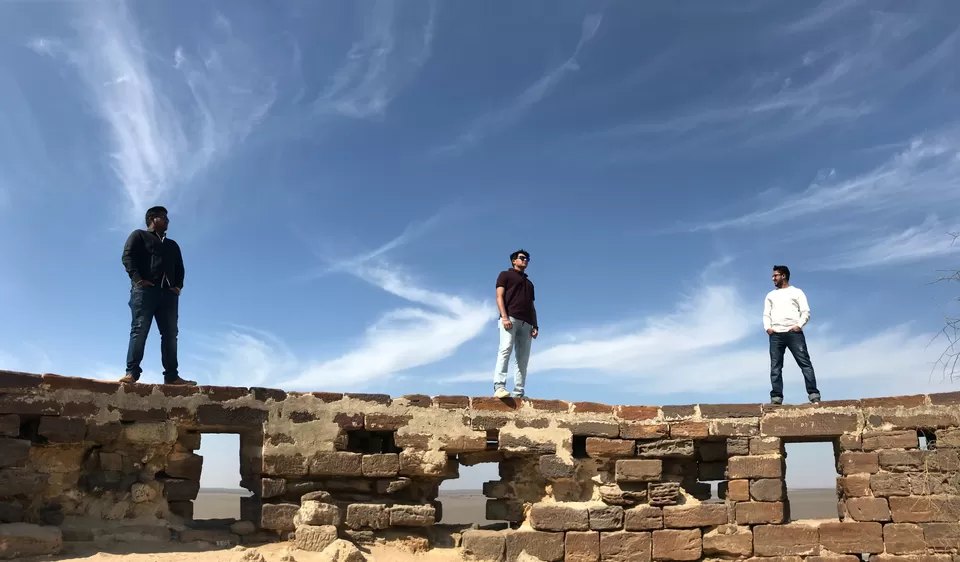
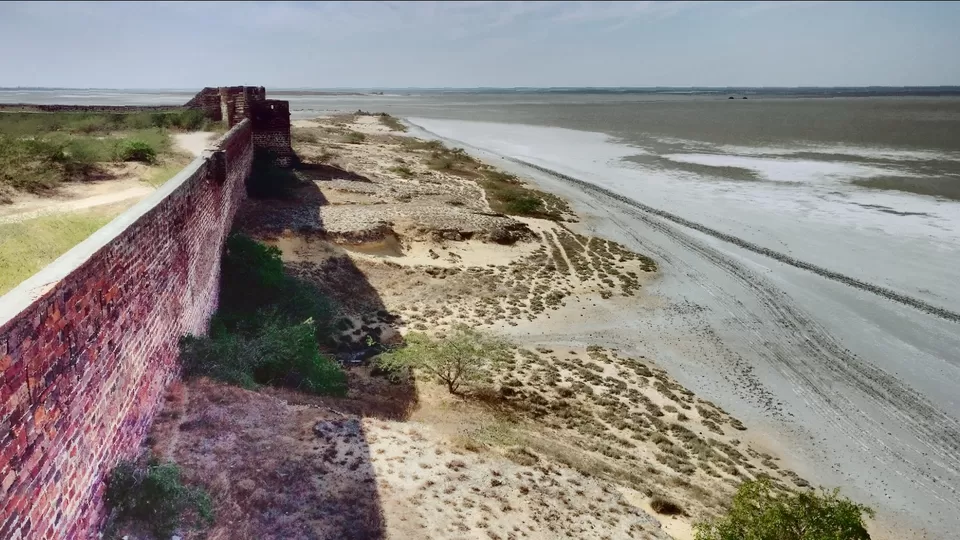
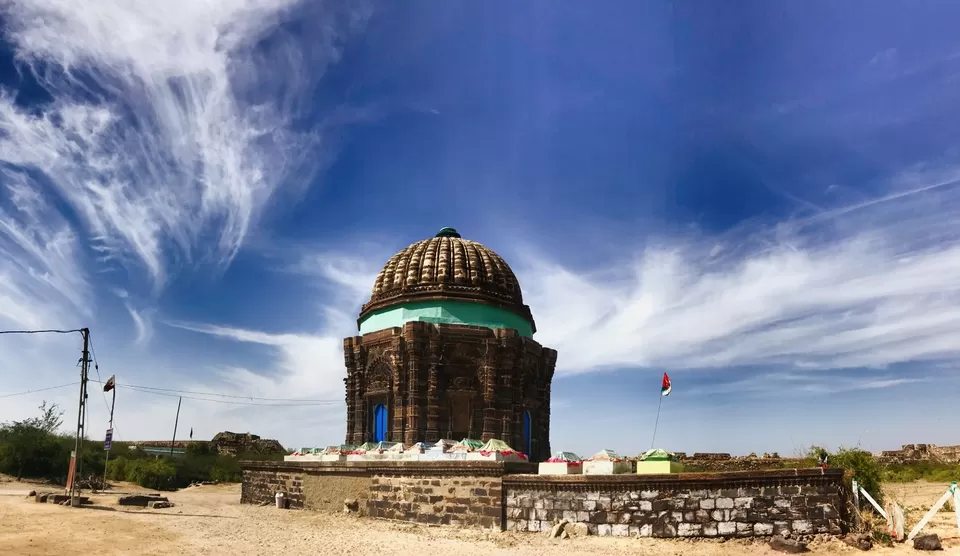

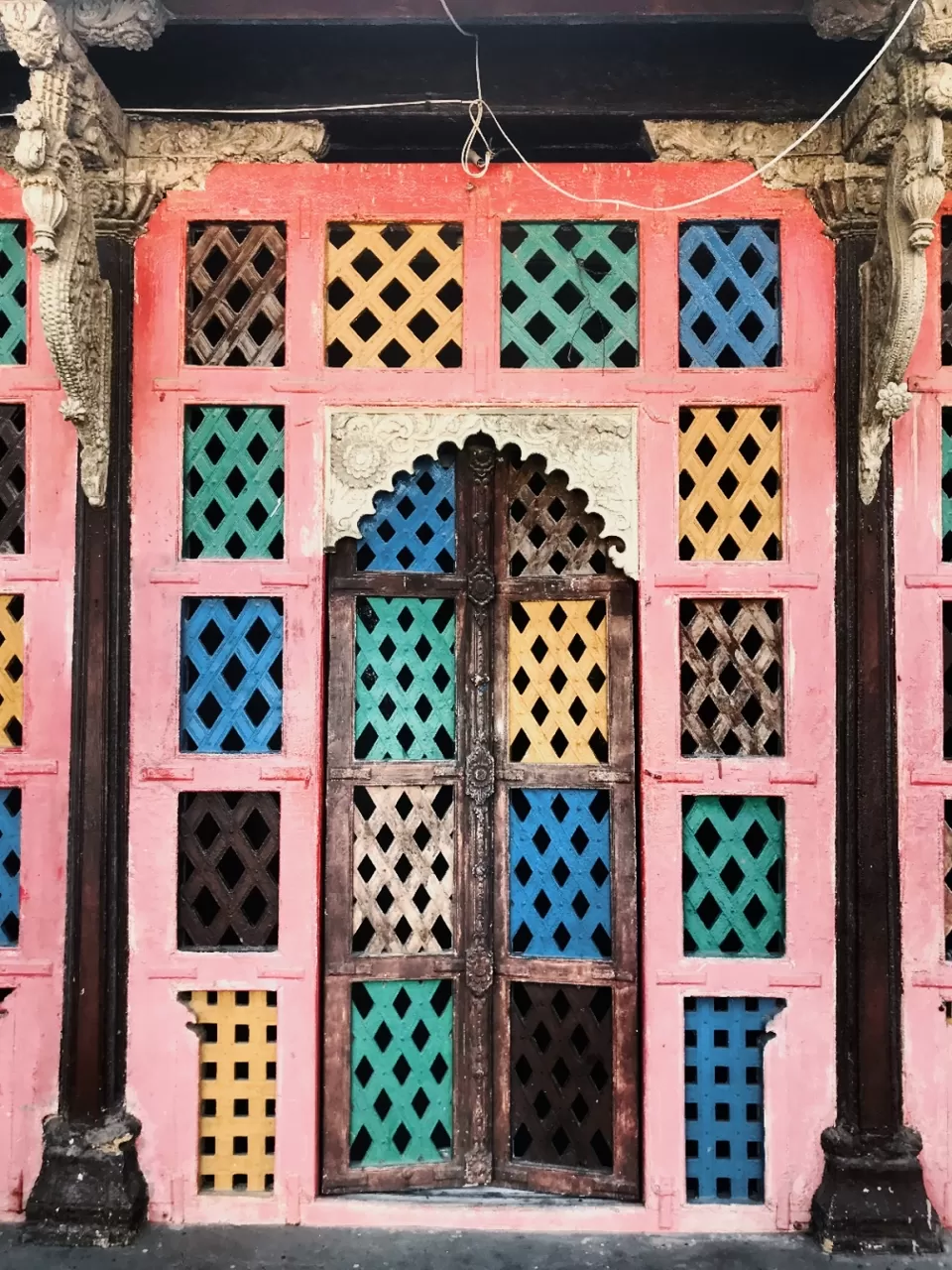
As this was our last day in Kutch, we were in a great dilemma to choose between Dholavira, an ancient archaeological site and Mandvi, a beach town to the east of Bhuj. As we ourselves were from the coastal city Mumbai, we gave Mandvi a miss and went for Dholavira ( which we were going to regret later).
We instantly regretted our decision as the roads to Dholavira were in pathetic shape. We couldn't spot any flamingos, as told on the way to the Khadir bet where the ancient city of Indus valley civilization is located. Dholavira is an island located inside the Rann of Kutch lake. The road connecting the mainland to the Khadir bet is straight as an arrow offering some of the most majestic views of white Rann on both the sides. We speeded our vehicle to make up for the time lost due to bad roads on the way. Going over 120 kph, suddenly greeted by multiple speed breakers at the start of the Amrapar village, our car jumped like a ballet in the air landed on the ground completely dead. We tried everything we could but not a shred of life was found in our ride. We were standing in the middle of the road helpless while the villagers surrounded us. The local mechanics tried everything in their arsenal for over an hour as nothing worked out when we were finally advised to call a seasonal mechanic from a nearby village at about a distance of 70 km (not so nearby i guess). We waited with the villagers as the mechanic arrived after an hour and began his diagnosis. The people here were extremely down to earth as we kept talking about various stuff sipping hot tea. We spoke about the government, Agricultural opportunities, the village itself and the livelihood of the people there. Sometimes a tragedy is a blessing in disguise as here was the case that it gave us an insight into one of the remotest villages of India. The mechanic was still trying to figure out the issue as we sat in front of a local shop unperturbed by the situation enjoying our conversation with the humble villagers. After almost an hour our ride came back to life and we bid adieu to such generous and kind hearted folks only to visit them back someday.
The remains at Dholavira, will take you back in time to the Indus valley civilization, the pioneers of city planning and infrastructure.
The sewer system, the cooking practices and the agriculture techniques used by this civilization were man's first step towards modernization. There is also a museum which displays the excavated tools and remains of the one of the oldest cities of known human settlement . If you are not a die hard fan of history, this place can any day be traded for a visit to Mandvi which has better roads and numerous other tourist attraction ( Vijaya Vilas Palace being a prominent one). It was already late in the day and we were in the dire need to hit the road as soon as possible to cover as much distance before the night falls. The roads again were in bad shape that hindered our intentions to expedite the proceedings.
By midnight we were only able to reach Vadodara as we decided to take a break here and continue the remaining journey the next morning. We checked into a semi luxurious group of hotels chain to give ourselves a good night sleep after such a long and eventful day.
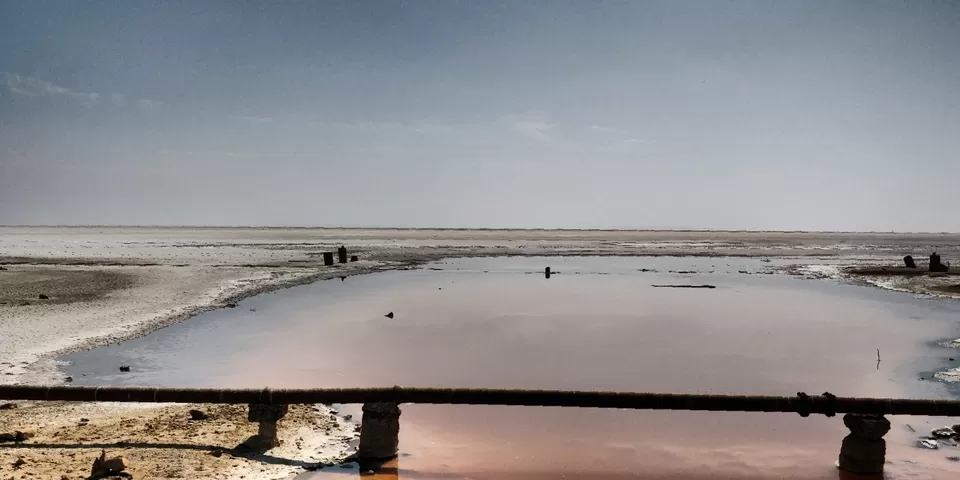
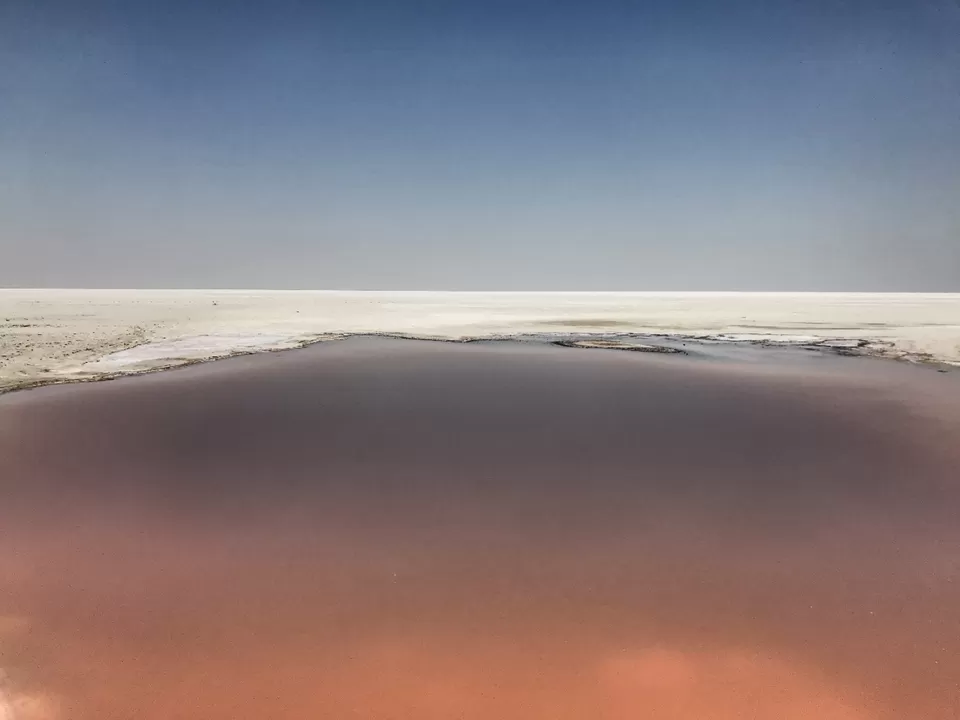
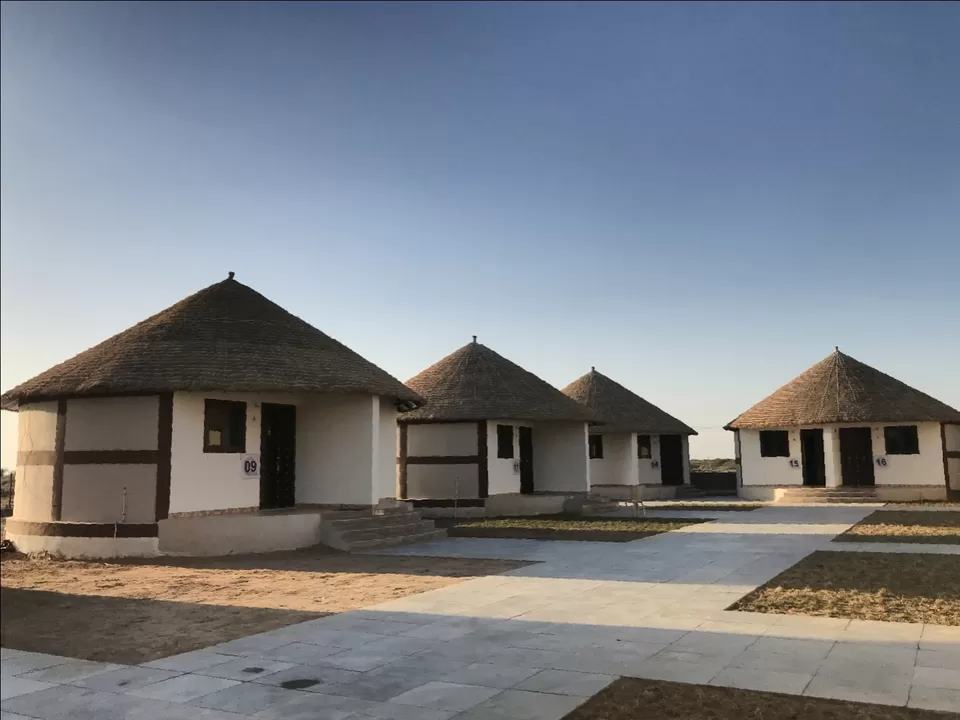
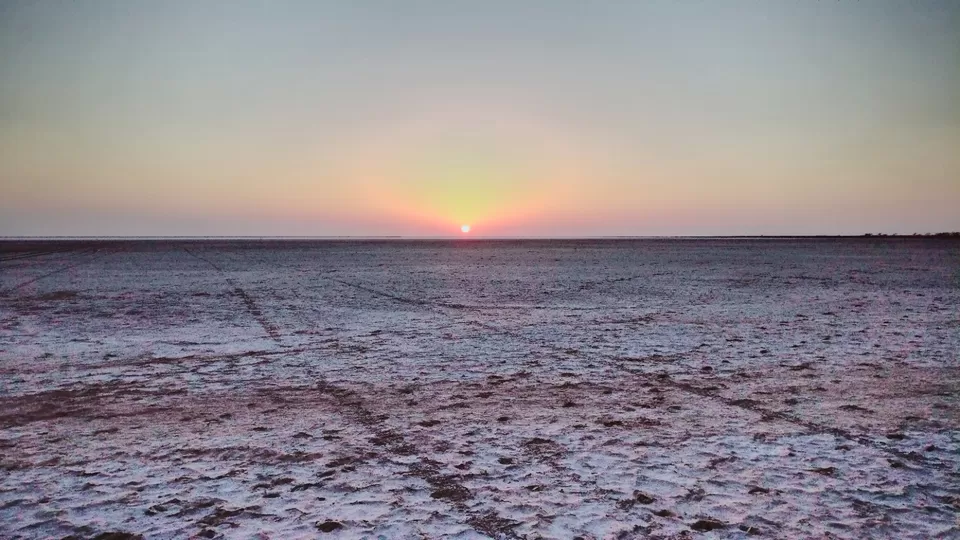
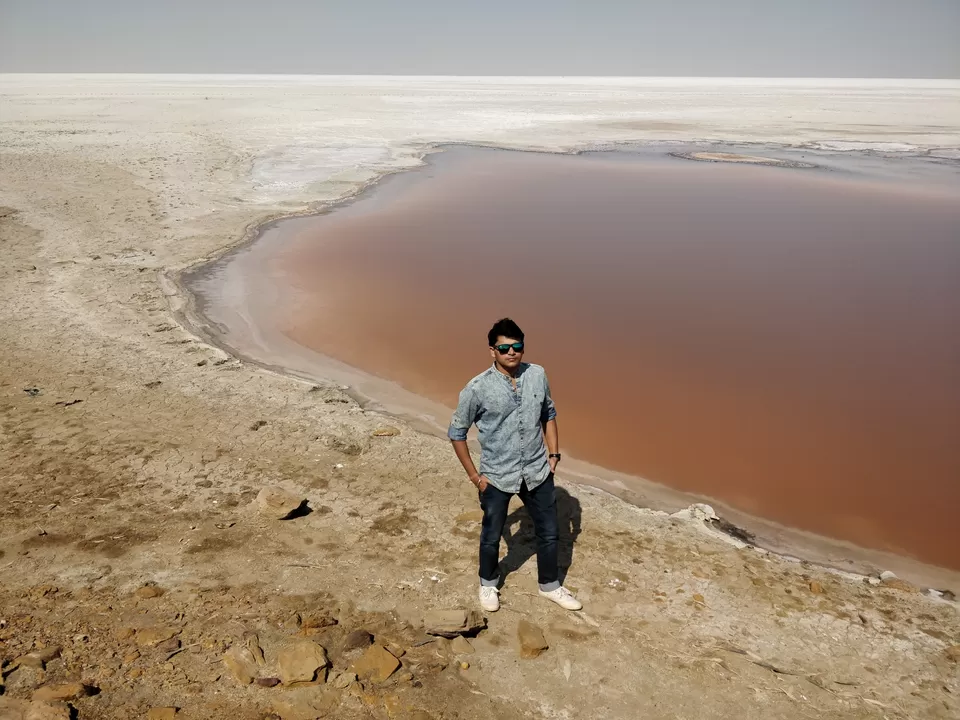
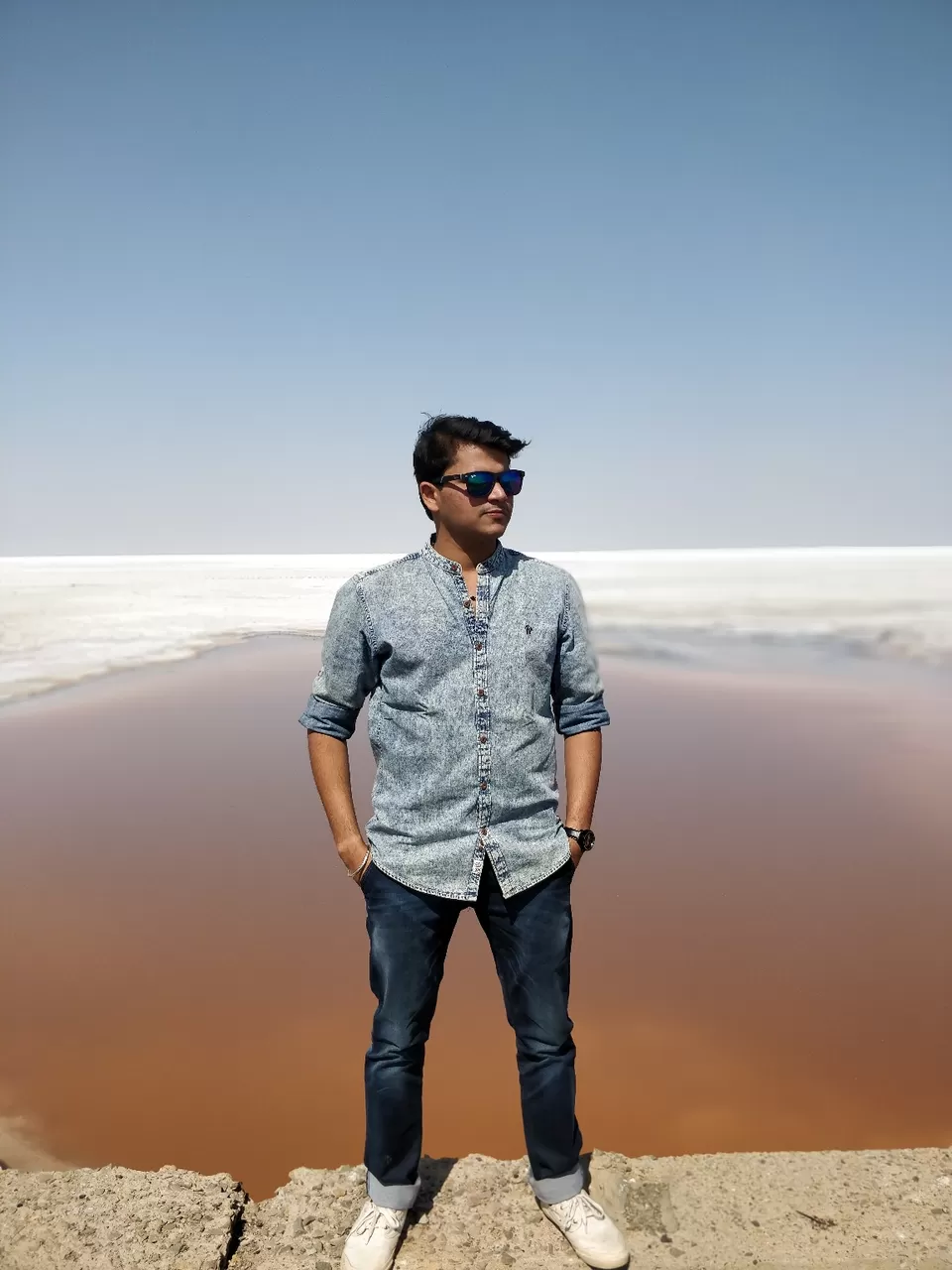
We started our day late and after checking out went Straight to the Mandap, a Gujarat cuisine restaurant for Brunch. Zomato was all praises for this place and well it didn't disappoint us a bit. The place serves a traditional thali with numerous Gujarati cuisines which would more than satiate your taste buds if not just hunger. We ate for like an hour till we were unable to leave our chairs with some happy and contented faces.
It was already noon and the day was anyways used up to go home early and utilize it for something else when we decided to visit the famous Laxmi vilas palace of Vadodara built by the Gaekwad, a prominent Maratha family that ruled the the erstwhile Baroda state. The palace is the largest private dwelling built till date with a size four times that of the Buckingham Palace.
The compound is a 500 acres space with a golf course within and has multiple buildings. The palace is an structural marvel carrying the reminiscence of an European country house styled on the Indo-Saracenic Revival architecture. Every corner of this ultra royal settlement is worth experiencing. The tour to this proud abode is done via a sound guided medium. It was an honor to witness such a great epitome of art and heritage still being touted as an indian symbol of royalty in various international forums.
Finally we were back on track measuring NH 48 with a few tea breaks in between to reach "Mumbai meri Jaan" just before midnight collapsing in our beds like there was no tomorrow.
Trip cost:
50k ( divided among 4 ppl)
Food for thought:
1) Stay in Bhuj at Okha homes a very nice secluded property. Mr Rajan is a true gentleman. (955 881 3931) you can give my reference.
2) Can trade Dholavira for Mandvi (just to refrain from driving on extremely poor roads)
3) Can explore the stay options on the way to Dholavira. There are lot of resorts coming up there which are right besides the Rann.
4) Please encourage the use of handicrafts within your social circle. In this age of modernization, everything more or less is machine made, the livelihood of people depending upon goods made by hands is diminishing day by day. moreover this art would someday be lost in the sands of time if not promoted and encouraged rigorously.
